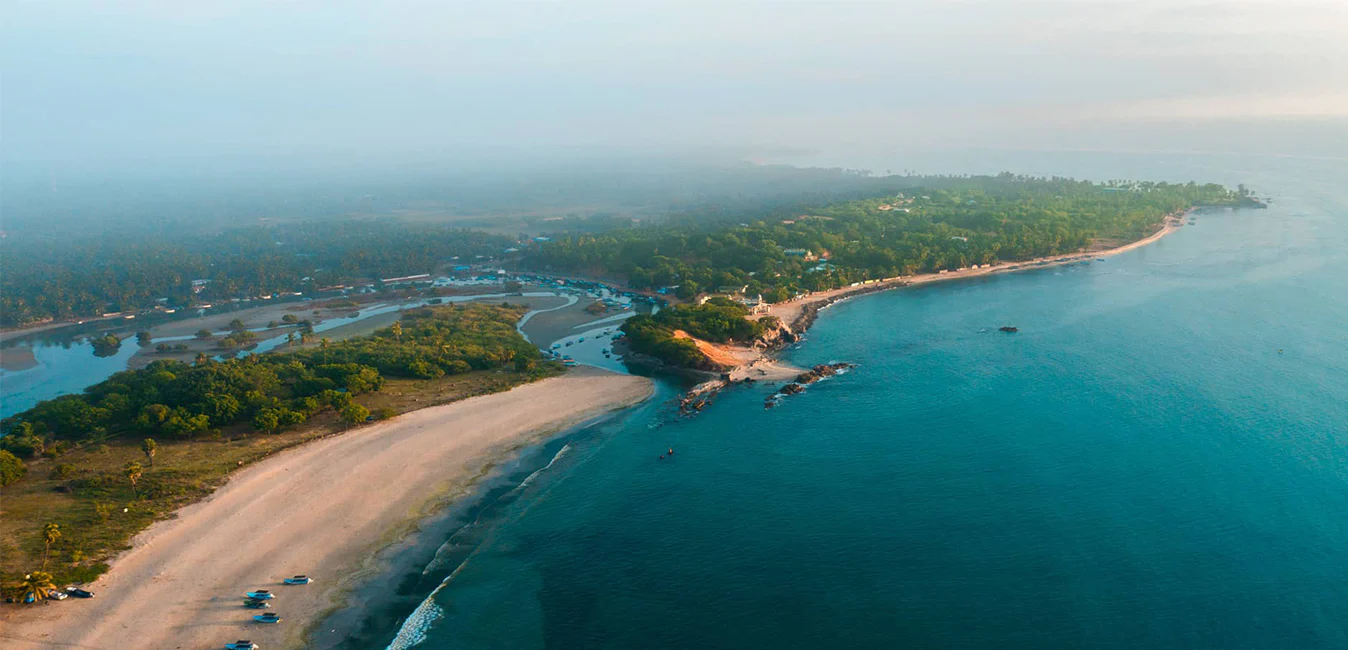
Trincomalee City
Trincomalee, located on the northeast coast of Sri Lanka, boasts a natural deep-water harbor and pristine beaches. Rich in history, it features landmarks like the ancient Koneswaram Temple. The city's diverse marine life and vibrant culture make it a captivating destination for tourists and historians alike.
環谷温泉
カンニヤ温泉 (シンハラ語: කන්නියා උණුදිය ලිං、タミル語: கன்னியா வெந்நீரூற்) று) は、スリランカのトリンコマリーにある熱井戸のある場所です。正方形の形に7つの井戸があります。井戸の深さはわずか 3 ~ 4 フィートで、底がはっきりと見えます。気温はかなり高いですが、春ごとに若干異なります。バケツ10~15杯分の水を汲むと井戸の水がなくなる
歴史修道院の古い遺跡は今でもこの地域一帯に見られますが、それらの工芸品のほとんどはスリランカ内戦中に破壊されたようです。 2011 年 9 月 9 日、敷地内にある 7 つの熱湯井戸、チャイティヤ塚、その他点在する建物遺跡が考古学的保護記念物として政府によって正式に認められました。この指定は官報番号 1723 に基づいて宣言されました。
アヌラーダプラ時代初期に属する仏塔塚と西暦 1 ~ 2 世紀の碑文が、この場所で行われた最近の考古学的発掘から発見されました。碑文は、近くにある5つのタンクの水が寺院に住む僧侶の使用のために確保されていたことを明らかにしています。
1834 年のセイロン地名辞典には、熱井戸の場所にガネーシャ神聖な寺院の遺跡が記録されています。
1955 年に発行された旅行者向けのハンドブックには、カンニヤの 7 つの温泉が仏教徒、ヒンズー教徒、イスラム教徒にとって同様に神聖な場所であると記載されています。付近にはダゴバ、ヴィシュヌ寺院、モスクの遺跡が並んで立っていると言われている。この本ではさらに、井戸はラーヴァナによって造られたという地元の伝統について説明されています。
伝説スリランカのタミル人は、亡くなった愛する人たちに捧げるヒンズー教の宗教的儀式をこの場所で執り行っており、民間伝承では叙事詩ラーマーヤナの敵対者であるラーヴァナによって始められたと信じられています。地元の民間伝承によると、この場所はヒンズー教の叙事詩ラーマーヤナの敵対者ラーヴァナと関係があるとされています。ラーヴァナと母親は、コネスワラム寺院とカンニヤ温泉でヒンズー教のシヴァ神を崇拝しました。ラーヴァナは、母親が体調を崩していたため、コネスワラム寺院を撤去したいと考えていました。ラーヴァナが岩を持ち上げていると、シヴァ神はラーヴァナに剣を落とさせました。ラーヴァナの母親はその知らせを聞いたとき、言い知れぬ悲しみに打ちひしがれました。ラーヴァナが戻ってきたとき、彼は最愛の母親の死を知り、落胆しました。母親の儀式を行うために、ラーヴァナは剣で地面の数カ所を突き刺したところ、そこからいくつかの噴水が湧き出ました。お湯は熱かったので、それが温泉の始まりでした
ヒンズー教の叙事詩『マハーバーラタ』には、この熱井戸が海の真ん中のゴカルナ湾近くにあり、三界で知られ、原住民族ナーガを含む亜大陸のすべての人々によって崇拝されているウマの配偶者シヴァの島神社であると記されています。デーヴァと夜叉、川と海と山。コネーシュワラ寺院と温泉は、初期パーンディアン王国のカンニヤークマリとタミラパルニ島(クディラマライ)に続く南へ向かうヒンズー教徒の次の巡礼地であり、崇拝者は寺院で3日間断食する必要があると続けられている。
地元の考えによると、カンニヤ温泉の歴史はラーヴァナ時代にまで遡り、ゴカルナ湾 (トリンコマリー) 近くの温泉についての最初の記述は叙事詩『ラーマーヤナ』にあると言われています。
About Trincomalee District
Trincomalee is a port city on the east coast of Sri Lanka. The Bay of Trincomalee's harbour is renowned for its large size and security; unlike every other in the Indian Sea, it is accessible to all types of craft in all weathers. The beaches are used for surfing, scuba diving, fishing and whale watching. The city also has the largest Dutch fort in Sri Lanka. It is home to major Sri Lankan naval bases and a Sri Lankan Air Force base.
Most of the Tamils and Sinhalese believe that this place is sacred to them and they are the indigenous people of the area. Trincomalee and its environs have both Hindu and Buddhist sites of historical importance. These sites are sacred to the Hindus and Buddhists.
About Eastern Province
The Eastern Province is one of the 9 provinces of Sri Lanka. The provinces have existed since the 19th century but they didn't have any legal status until 1987 when the 13th Amendment to the 1978 Constitution of Sri Lanka established provincial councils. Between 1988 and 2006 the province was temporarily merged with the Northern Province to form the North-East Province. The capital of the province is Trincomalee. The Eastern province's population was 1,460,939 in 2007. The province is the most diverse in Sri Lanka, both ethnically and religiously.
Eastern province has an area of 9,996 square kilometers (3,859.5 sq mi).The province is surrounded by the Northern Province to the north, the Bay of Bengal to the east, the Southern Province to the south, and the Uva, Central and North Central provinces to the west. The province's coast is dominated by lagoons, the largest being Batticaloa lagoon, Kokkilai lagoon, Upaar Lagoon and Ullackalie Lagoon.














